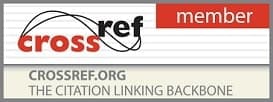- Printed Journal
- Indexed Journal
- Refereed Journal
- Peer Reviewed Journal
P-ISSN: 2394-1685 | E-ISSN: 2394-1693 | CODEN: IJPEJB
Impact Factor (RJIF): 5.38
2020, Vol. 7, Issue 1, Part C
Kinesiology of kayaking in case of physical disablity with a special focus on footrest
Author(s): Bernadett Kerteszne Nemet, TamasTerebessy, Gyorgy Szoke and Zoltan Bejek
Abstract:
During kayaking, the whole body works in a perfect harmony. While the trunk is doing a rotation, flexionextension helps to the upper limb to create a special cyclic paddle. The purpose of this study was to gain whether there were any significant differences between disabled and non-disabled kayakers with special focus on the use of footrest. Methods: Thirteen (n=13) elite physical disabled athletes, eleven (n=11) elite non-disabled athletes and nine (n=9) athletes whose movements were artificially limited to imitate disabled conditions were measured. Results: Upper limb muscle activities were significantly different in the disabled group. In the disabled group, knee and trunk motions and muscle activities were also significantly different compared to the non-disabled group. Significant differences were found in performance, force and footrest use. Conclusions: Our results proved our assumption that motions and muscle activities of disabled and non-disabled athletes were significantly different.
DOI: 10.22271/kheljournal.2020.v7.i1c.1634
Pages: 162-166 | 1353 Views 180 Downloads
Download Full Article: Click Here

How to cite this article:
Bernadett Kerteszne Nemet, TamasTerebessy, Gyorgy Szoke, Zoltan Bejek. Kinesiology of kayaking in case of physical disablity with a special focus on footrest. Int J Phys Educ Sports Health 2020;7(1):162-166. DOI: https://doi.org/10.22271/kheljournal.2020.v7.i1c.1634








 Research Journals
Research Journals